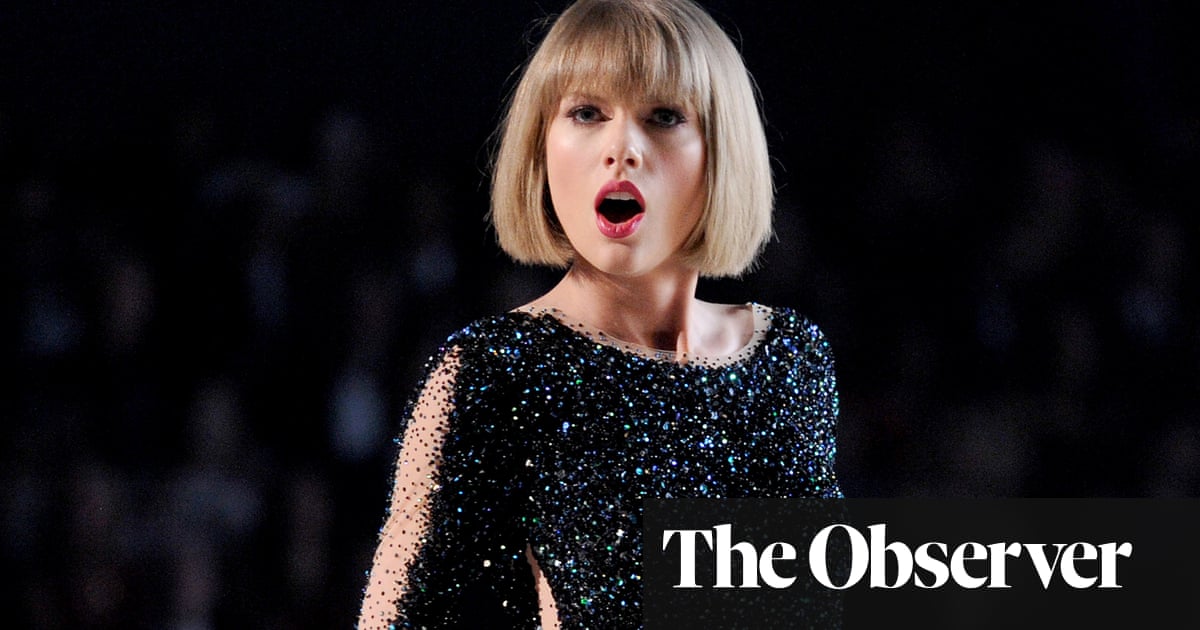
Taylor Swift further burnished her image as the saviour of underpaid artists last week when Universal Music Group (UMG) confirmed that as part of her new record deal, it would share proceeds from the eventual sale of its $1bn stake in Spotify with its musicians.
Saint Taylor, as one industry observer wryly calls the 28-year-old, was quick to tell her 113 million Instagram followers that the promised windfall for fellow artists was her central demand in negotiations.
Swift’s victory appears to relate to the terms of the distribution of the proceeds, because UMG had already announced an intention to share out the Spotify money back in March – two years after rivals Sony and Warner had made similar moves. Swift’s social media post makes a vague reference to Universal’s payout being on “much better terms” than that offered by rivals. But with Universal’s French parent company, Vivendi, readying a sale of up to half of the $30bn UMG, a repetition of the pledge, as part of a deal for one of the world’s biggest artists, is likely to impress potential investors.
And the deal allows the business-savvy Swift to leverage leaving the firm that has been her musical home since she was 14 – Nashville-based Big Machine Records – to extract lucrative terms from the contest to sign her up.
Spotify aside, the deal strikes another blow for artist power – albeit just for Swift. She has clawed back the rights to own and exploit the master recordings of any music she makes from now on. If she keeps churning out the hits, the earnings potential from that is huge: Swift’s previous six albums have sold 40 million copies worldwide.
“It is a rare deal, uncommon for a really big artist at the peak of their career to be able to take control,” says Mark Mulligan, analyst at MIDiA Research, adding that Swift was “setting a precedent for other major-label artists at the peak of their career”. As he points out, “the record label would always prefer to own those rights.”
The rise of streaming via Spotify, Apple and Amazon has put a music industry once racked by plummeting CD sales back in rude health. That transformation has been seized on by Swift, who has led the fight for artists to get a better share of revenues in the age of the digital giants.
Last year, she finally returned to Spotify, ending a three-year boycott over the tiny royalties per song played that artists receive. She has also previously attacked the Apple Music streaming service for not paying artists during users’ free three-month trial period, provoking the company to change its policy.
Swift is one of the few stars who have a big enough fan base to be able to cut deals of her choosing, to be able to boycott Spotify, or to weather the risk of being outspoken. She recently made headlines when endorsed two Democratic candidates in the US midterm elections, after long keeping quiet about her political views. Her support provoked Donald Trump to respond: “I like her music about 25% less now”.
The music industry reached a tipping point last year as global income from streaming music passed that of the sale of physical formats, primarily CDs, for the first time. And UK record companies saw revenues grow at the fastest rate since the height of Britpop in the mid-1990s, fuelled by a 45% annual rise in income from subscription streaming services.
However, Mulligan says that while the streaming numbers look huge, the economic benefits for artists are harder to come by. Gross royalty rates are only about a penny, or cent, per stream and all sorts of cuts then come out for record labels, rights organisations and the like before an artist gets anything.
It can take more than a million streams of a song to earn as little as £2,000. And that’s for the very few signed artists who have “recouped” – paid back the advances from labels to fund their careers. “Most artists are like indentured labour,” says Mulligan.
The advent of the streaming era offered the promise that any artist might be discovered, but in reality the music industry is still dominated by a very small number of stars, like Swift. Last year, the earnings of the top 1% of artists in each music category accounted for 78% of revenue from all music sales, 68% of income from live performances and 56% of merchandise sales.
For independent or unsigned artists, it is even tougher to make money from streaming. “For independent artists, streaming provides the lowest form of income we receive,” says Serkan Dervis, who manages independent artists in London. “What streaming means for some of my acts is that there is a PR element to it, but you’d still be lucky to even get on a playlist. But at least it can give unknown acts at least a little form of exposure. But the main money maker is still live performances.”

1 comment:
Nice article. Thanks for the information
Post a Comment